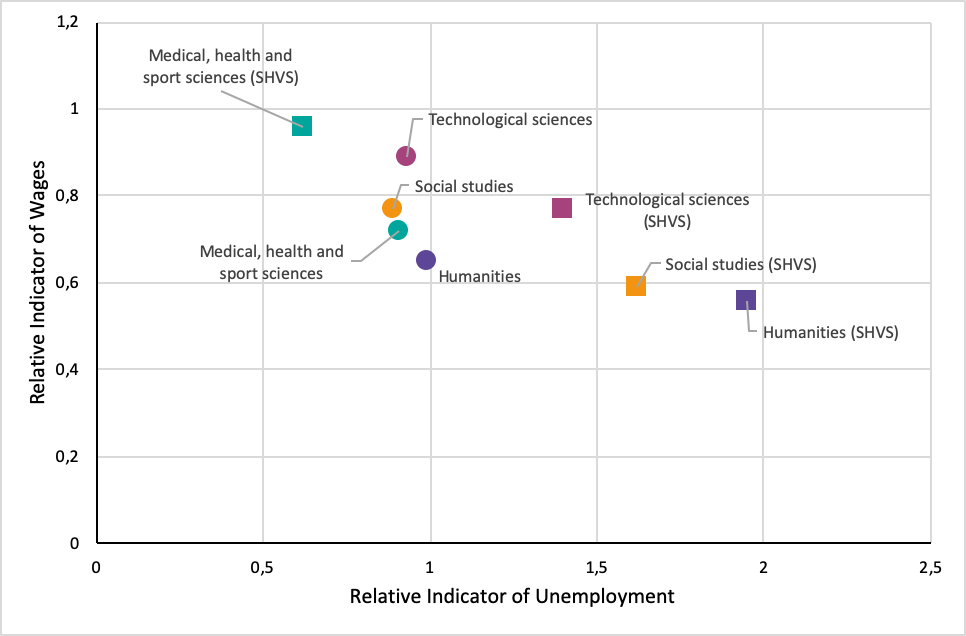
The graduates of first-cycle studies at state higher vocational schools are more determined to enter the job market and more often combine studies with a professional career. People completing the second-cycle vocational studies face higher risk of unemployment than other graduates – however it only pertains to graduates who have no professional experience prior to a diploma. These results stem from the analyses conducted by the Polish Graduate Tracking System (ELA).
The determination of BA graduates from state higher vocational schools to get a job demonstrates itself through the high proportion of them taking up employment and a double increase of people registering as unemployed in comparison to average graduates. The graduates of state higher vocational schools are less likely to pursue second-cycle studies (46%) than the other graduates of first-cycle studies (54%). However, those who pursue further education are more inclined to combine studying with working – they spent 15% more months working than an average graduate.
In the case of second-cycle, studies the percentage of months worked after getting a diploma by state higher vocational schools’ graduates is similar to that observed in the general population of graduates (80 percent and 77 percent, respectively). However, they are more at risk of unemployment – this problem affects especially those state higher vocational education graduates who did not have experience of employment or self-employment before graduating. The graduates of state higher vocational schools who had such experience happen to be unemployed as frequently as an average graduate.
The monthly wages of the second-cycle graduates from the state higher vocational schools were a bit lower than in the general graduate population: they amounted to 2,900 PLN and 3,300 PLN per month, gross, respectively. The difference stemmed mainly from the fact that the state higher vocational schools’ graduates live in poviats where an average salary is lower. If the average salary level in a poviat of residence is taken into account, the difference all but disappears – the graduates of vocational schools earn only 2 percent of the local average salary less than an average graduate (75 and 77 percent of the average salary level, respectively).
This year’s edition of the Polish Graduate Tracking System shows that the graduates of the state higher vocational schools, are more at risk of unemployment and lower monthly wages than other graduates in the case of the majority of fields of study. There are three exceptions: medical sciences, health sciences, and physical culture (sport) sciences. The graduates of those fields of study achieved noticeably better results than their counterparts from other higher education institutions.

ELA knows everything about the economic fate of graduates
The Polish Graduate Tracking System (ELA) is developed by the National Information Processing Institute, and
commissioned by the Ministerstwo Edukacji i Nauki. It aims to present the most comprehensive information on the
situation of graduates on the job market. The main source of information in the system are administrative data from
two sources – the Social Insurance Institution system (data, inter alia, about the professional situation of
graduates: employment, unemployment, wages) and the POL-on system (the Integrated System of Information on Science and
Higher Education), i.e. the information system about the higher education supporting the Ministerstwo Edukacji i Nauki
(it contains information, inter alia, on the education of university graduates). Currently, the ELA system generates
five types of reports about the economic fate of tertiary education graduates: Job search and unemployment, Wages,
Work before and after graduation, Work and further studies, Geographical differentiation of graduates’ fate.